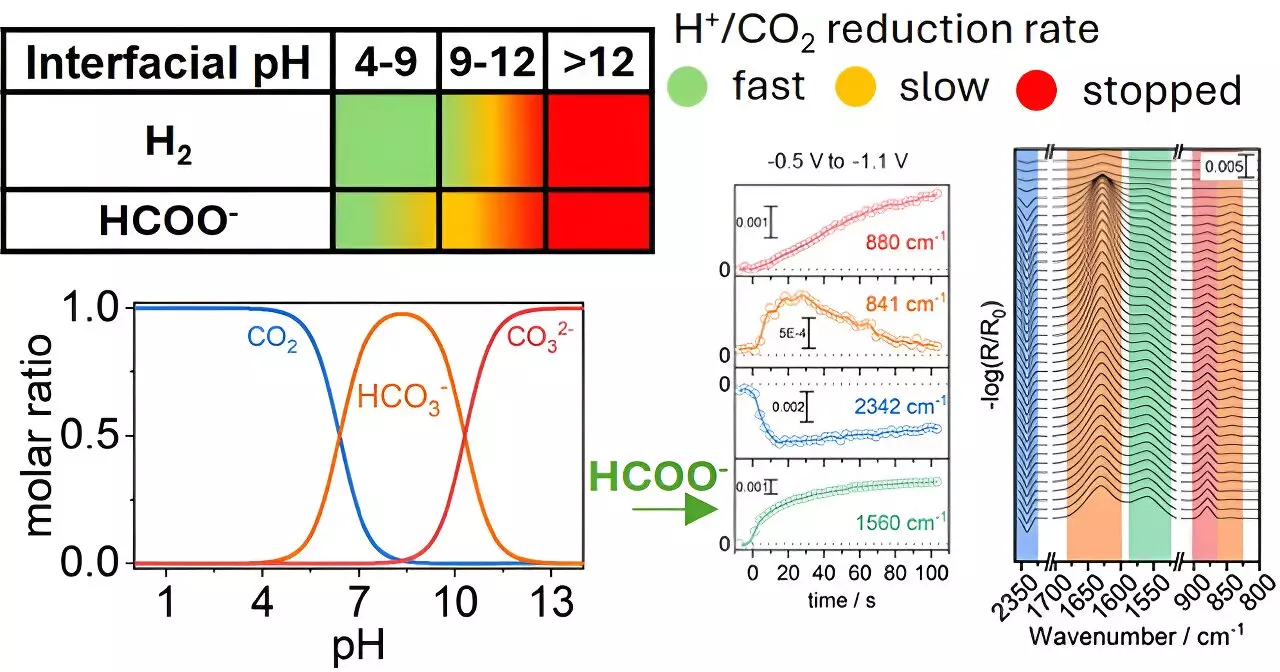Carbon dioxide (CO2) emissions pose a significant threat to our environment, necessitating innovative solutions to combat climate change. One promising approach is the reduction of CO2 into useful chemicals, a process that has captured the attention of researchers globally. Among the frontrunners in this field are scientists from the Department of Chemical Engineering at the University of Twente, led by Georgios Katsoukis. Their recent findings illuminate how the chemical environment surrounding copper electrodes dramatically influences the efficiency and selectivity of CO2 conversion, revealing a path towards enhanced sustainability.
At the heart of CO2 reduction lies the challenge of selectivity—especially when multiple products can be generated from a single reaction. While traditional research has primarily emphasized catalyst materials, understanding the broader chemical context is equally crucial. The new study published in ACS Catalysis enriches our understanding by demonstrating how localized alterations in pH near copper electrodes can influence the reaction pathways and yield of formate, a compound with numerous industrial applications. This revelation urges scientists to look beyond mere catalyst development and to consider the implications of the surrounding chemical environment.
The research team meticulously studied CO2 interactions at copper electrode surfaces under varying aqueous conditions. By manipulating the pH levels nearby, they observed that the local chemical setup significantly impacted the reaction rate and the formation of formate. This finding indicates that optimizing the interface between the electrode and the solution can lead to enhanced conversion efficiency of CO2 into this valuable chemical precursor. This paradigm shift in focus—recognizing the critical role of chemical conditions—opens new avenues for developing more effective carbon conversion technologies.
The implications of this research extend far beyond laboratory findings; they suggest a transformative approach toward CO2 reduction in practical applications. By fine-tuning the chemical environment around copper electrodes, not only can selectivity towards desired products improve, but the longevity of these electrodes may also increase. This dual benefit signifies a leap toward creating robust systems capable of continuous operation, thus contributing to the viability of a circular economy.
The discoveries made by Katsoukis and his team provide a compelling framework for future exploration in CO2 reduction technologies. By adjusting the chemical conditions in addition to focusing on catalyst engineering, scientists can create highly efficient systems capable of converting carbon emissions into meaningful resources. This holistic approach might be the key to unlocking practical solutions, driving innovation, and progressing towards environmental sustainability.
The implications of the University of Twente’s study highlight the critical nature of the chemical environment in CO2 reduction processes. This research not only challenges existing paradigms but also encourages a comprehensive view of catalysts that encompass chemical conditions alongside the materials themselves. As we strive for a more sustainable future, such insights pave the way for effective technologies that can transform greenhouse gas emissions into valuable assets, fostering a healthier planet for generations to come.


Leave a Reply